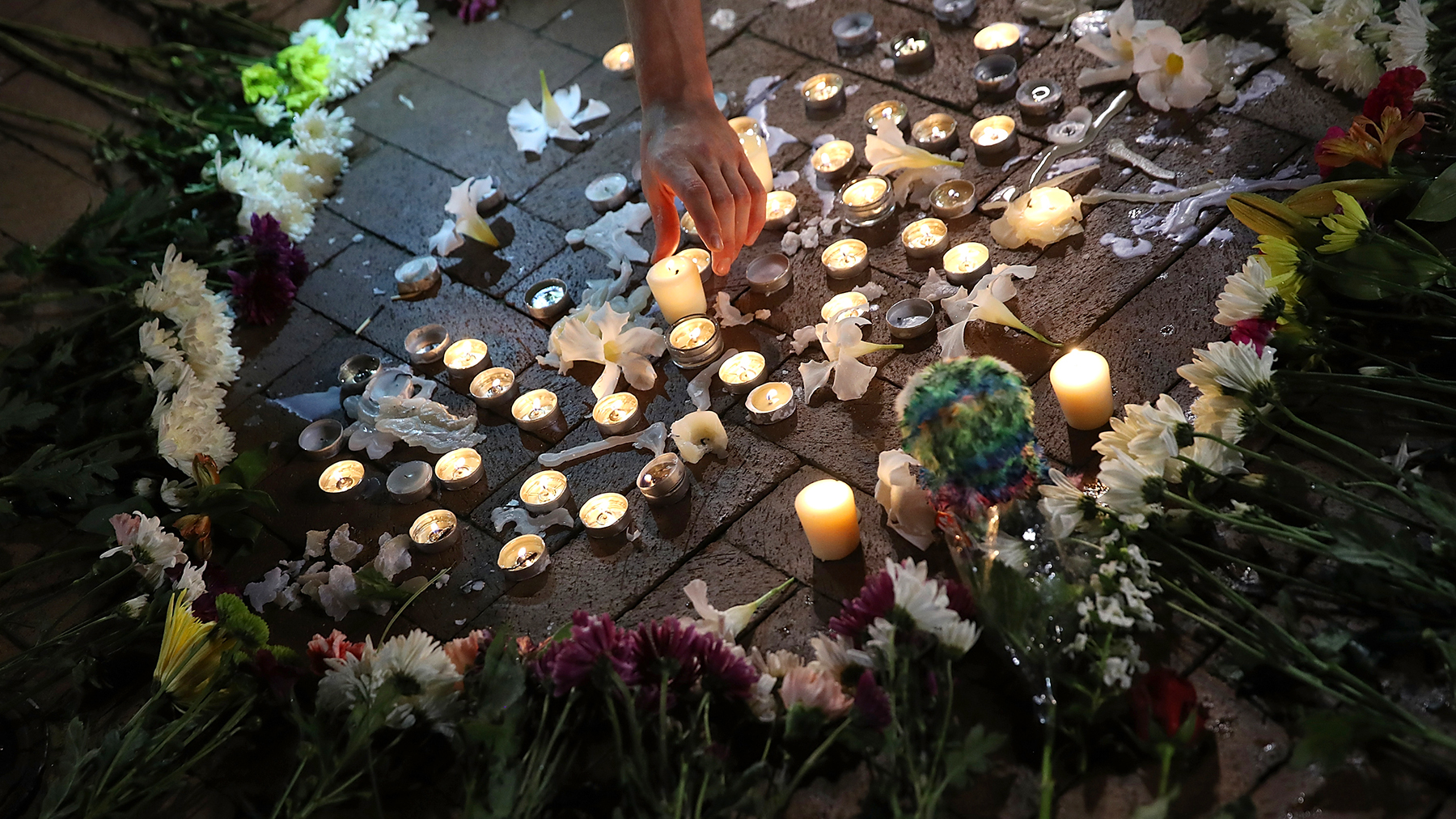Hate crimes reported to police in America’s 10 largest cities went up by 12.5 percent in 2017, according to a new analysis, making it the fourth consecutive year U.S. hate crime reports in those areas have increased.
The Center for the Study of Hate and Extremism released a report last week examining 2017 police data on hate crimes from 38 jurisdictions across the U.S. The study also registered the highest number of total hate crimes in the 10 largest cities in more than a decade.
When researchers expanded their analysis to include the data from all 38 jurisdictions, they found a similar overall increase of 12 percent in 2017 compared with 2016. Hate crimes went up in seven of the 10 largest cities in America. And the study notes that while reports decreased in Chicago and New York in 2017 (by 14 and two percent, respectively) those cities had seen multi-year hate crime highs in 2016.
Brian Levin, director of the Center for the Study of Hate and Extremism, and professor at California State University, San Bernardino, where the Center is housed, co-authored the study. He noted the possible role that Russian social media influence may have had on simmering tensions, citing a May 2018 content analysis by USA Today that shows a significant portion of Russian ads were targeted toward exacerbating existing racial divisions.
“I’m not saying they started anything, I’m saying they’re happy to throw gasoline on a fire that is already raging,” he explained. “These foreign actors were trying to, according to the indictment, sow discord, and this is the first statistical demonstration of that.”
The analysis also notes the limitations of relying on police reports. Many hate crimes are never reported to police. Even when they are, jurisdictions vary widely in their responsiveness and reporting practices. That inconsistency can skew totals and even leave whole categories of victims uncounted. Media reports over the last year have examined how many police departments underreport hate crimes to the FBI, or in some cases, fail to report any at all.
The Center’s study also investigated whether bogus hate crimes are reported to police in significant numbers. Based on their findings, while such hoaxes aren’t totally unheard of, they constitute a tiny proportion of overall hate crimes. “Our Center has found a very small number of approximately two dozen confirmed or suspected instances of false reporting ‘hoaxes’ in the last couple of years amidst thousands of hate crimes reported to police,” the researchers conclude.
Not all police departments keep statistics classifying hate crimes by bias type, but of those that did, the analysis found the most common victims were targeted because they were black, LGBT or Jewish.
Levin said the data also shows troubling trends for other groups. “You’re seeing anti-transgender hate crimes now in the picture,” he said, “which is disturbing because lots of these are extraordinarily violent.” The Center also found that, for the hate crimes that were classified by religious subcategory, five percent were anti-Muslim. Levin explained the number is likely to be higher when you count all the incidents that were not classified in detail. Considering that American Muslims comprise only one percent of the U.S. population, they suffer a massive share of victimization. Since 2014, anti-Muslim hate crimes have gone up 99 percent, Levin said.
The new study also cites contextual data from the Southern Poverty Law Center, which collected information about more than 1,000 hate incidents in just one month after the 2016 election. This self-reported data appears to line up with hate crime data from police. There was a spike in the number of actual hate crimes for the fourth quarter of 2016, according to a subsequent study by Levin and his colleague James Nolan. The authors also found that hate crimes for that quarter were the highest since 2008. Not only that, Levin added: The numbers for November were the highest ever recorded for that month since data collection began in 1992.
Overall, the continuing rise is concerning, Levin said. “We’ve seen these consecutive increases going on in our cities for years,” he said. “That’s something we don’t commonly see.” But based on early numbers from 2018, the researchers are hopeful the climb is coming to an end. However, the Center has no predictions for the rest of the year. Levin said researchers are mindful of the very real possibility of another surge like the one at the end of 2016, especially with an election coming up.
“We aren’t making a full year forecast at this time, because we think we might be in the eye of the storm,” he said. “We aren’t even going to venture, although we certainly hope the declines continue.”
Photo by Win McNamee/Getty Images



